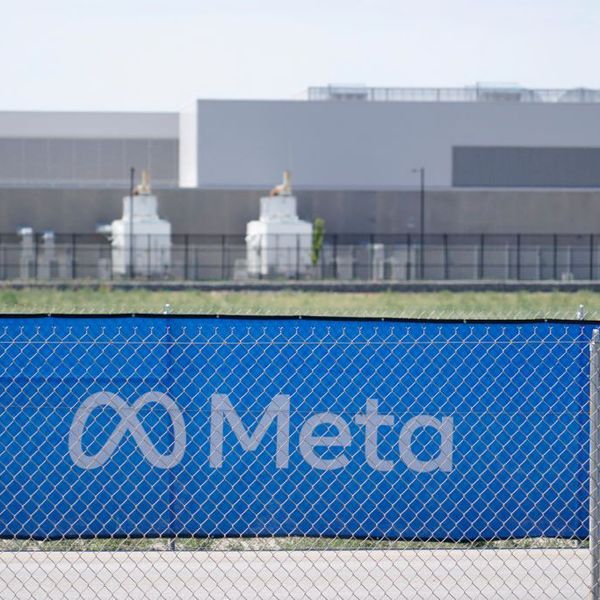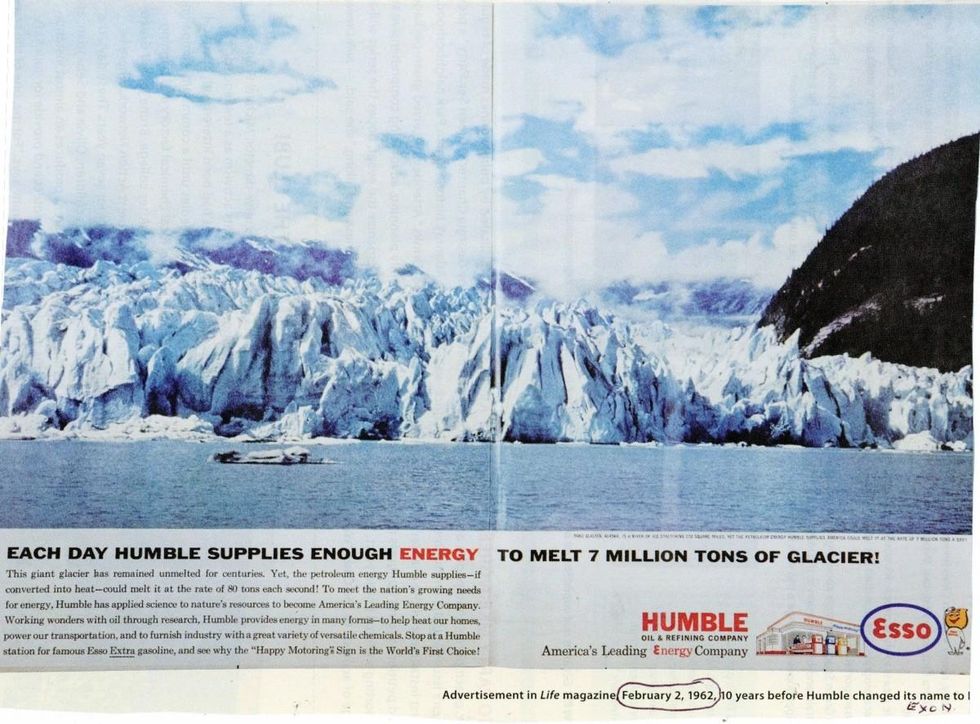From the Department of "Time Makes Ancient Good Uncouth" comes this historical oddity, a double page advertisement from the February 2, 1962, issue of LIFE magazine (which featured a helmeted John Glenn on the cover as he prepared to become the first American astronaut to orbit the earth).
The ad, extolling the wonders of Humble Oil and Refining, the company now known as ExxonMobil, proudly boasts that "Each Day Humble Supplies Enough Energy to Melt 7 Million Tons of Glacier!" Like that's a good thing.
Set against a beautiful color photograph of Alaska's Taku Glacier, the copy reads, in part, "This giant glacier has remained unmelted for centuries. Yet, the petroleum energy Humble supplies - if converted into heat - could melt it at the rate of 80 tons each second! ...Working wonders with oil through research, Humble provides energy in many forms - to help heat our homes, power our transportation, and to furnish industry with a great variety of versatile chemicals." What a swell company.
Anyone old enough to remember, or even just a fan of
Mad Men, knows that those were simpler days when grownups drank and smoked with reckless abandon and if your tyke came down to the kitchen wrapped in a polyethylene clothing bag you were more worried about mommy's dry cleaning being ruined than the risk of child suffocation. We're talking to you,
Betty Draper!
So back then the simple matter of a glacier disappearing must have seemed like no big deal either. Years would pass before human-generated climate change was recognized as a dangerous reality, although now we know, thanks to the journalists at InsideClimate News, that Exxon scientists told the company about the impact of burning fossil fuels on climate as early as 1977. After funding an initial period of research that backed up the scientists' claims, Exxon allegedly chose to cover up the evidence and deny the truth. The attorneys general of both New York and California have each launched major investigations.
As for that plucky Taku Glacier, largest in the Juneau icefield? Despite greenhouse gases and the alarming destruction of Arctic ice, because of its mass and location, Taku still manages to defy global warming and remains a popular Alaska tourist attraction, putting the lie to that magazine ad's fantasy of a rapid melt. If a glacier could, Taku would be thumbing its frostbitten nose at ExxonMobil.
Save



